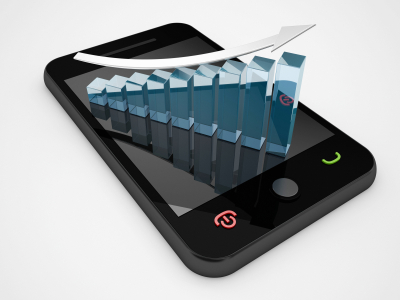
As of May 2013, more than 90% of American adults own a cell phone, and over half the world’s population (3.5 billion people) now utilizes mobile technology. These numbers are remarkable, exceeding all past years’ projections. And mobile phone usage is only growing exponentially. That’s why it’s more important than ever to understand the significance of mobile marketing in the realm of lead generation and advertising.
SHIFTING FROM ONLINE TO MOBILE
Technology is getting easier to fit into smaller places—people want to be more mobile themselves but still have the ability to connect. With the advent of smartphones and tablets, more and more consumers are using mobile devices to access information and communicate with the world.
According to the PEW Research foundation, 63% of adult mobile phone owners now use their cellular phones to go online, and 34% go online almost entirely using their phones. That means 1/3 of the entire online market has replaced their computer with their phone, making mobile advertising all the more crucial when creating brand development and lead generation initiatives. Accordingly, companies are beginning to shift their marketing strategies away from online and toward mobile.
WAYS TO USE MOBILE MARKETING
The fastest growing marketing strategy for mobile devices is clearly text message marketing. And it’s no surprise! Polls report that 98% of texts sent are opened, and that more than 90% of mobile users open a text within 15 minutes of receipt. SMS Marketing is therefore not only the most efficient form of mass communication, it tends to also be the most cost effective. Another mobile marketing platform growing by the day is Voice Broadcast technology, allowing companies to send out pre-recorded voice messages to thousands of customers in minutes. With Voice Broadcasting, companies also have the option to create phone trees and IVR solutions, which allow customers to pay their bills, purchase products, and take advantage of offers directly through their cell phones. Businesses use Text Messaging and Voice broadcasting for a plethora of advertising, lead gen, and customer engagement purposes. Some uses include:
- Announcing new products or services
- Sending out limited-time specials and discounts
- Promoting customer referral programs
- Announcing company changes, policies, and terms
- Broadcasting useful or fun information for continued engagement and brand development
- Billing and past due notices, with options to pay through phone
WHAT ARE PEOPLE DOING ON THEIR PHONES
One angle to consider when deciding how to interact with mobile users is to understand what information they’re looking for. According to PEW Research, the following are the top 10 ways that Americans use their cell phones, in order of most usage:
- Check weather reports and forecasts
- Use social networking sites
- Get directions via navigation services
- Get news
- Play games
- Upload photos to a photo sharing site
- Listen to streaming music
- Bank online
- Get coupons for deals at local businesses
- Watch movies and TV shows via an online subscription service
DON’T GET LEFT IN THE TECHNOLOGICAL DUST
Advertising, lead gen, and customer engagement are all key factors in any company’s continued success. But the world is changing…it’s going mobile! Any company wishing to sustain in today’s tech-savvy economy has to consider how to develop mobile marketing strategies for their particular vertical and their unique customer base. Don’t get left behind by your competitors: Start texting, start calling, get mobile!